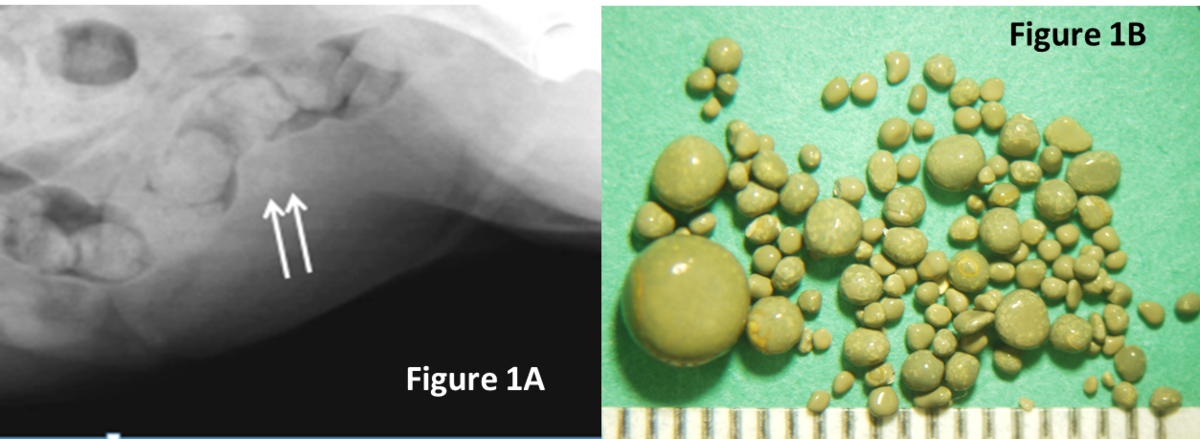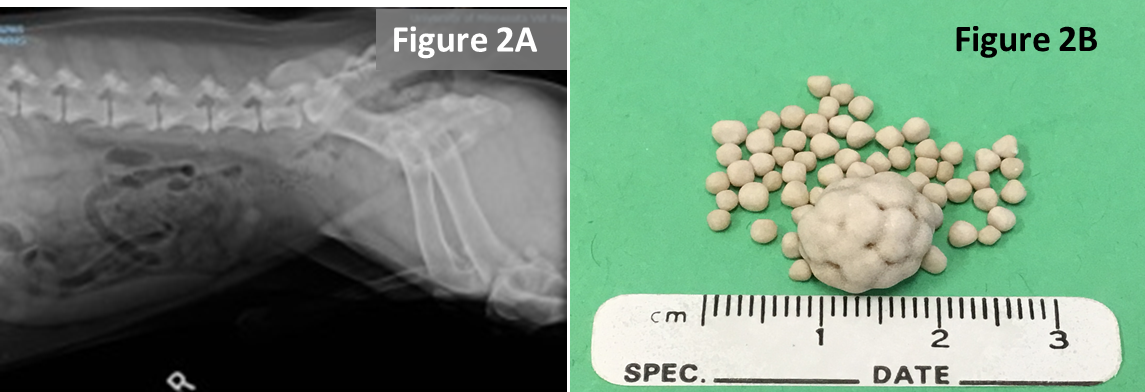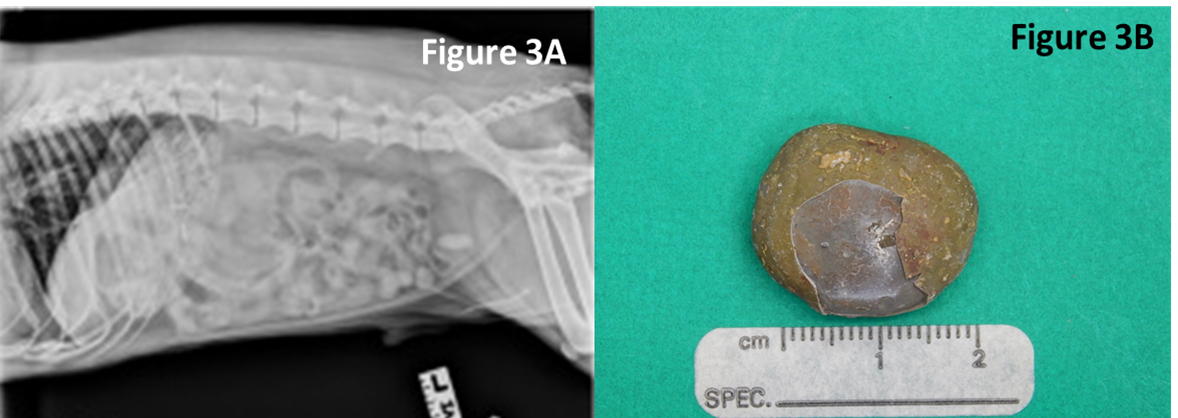Image of the month
Why you see them, why you don't (Radiographs and uroliths)
Don’t be fooled by published texts describing urate and cystine uroliths as radiolucent. They are correct that urate and cystine are the least radiopaque of the common stones in dogs and cats. However, radiographic appearance of uroliths depends on several factors of which size and mineral type are the most important. Small urate and cystine stones (Figure 1 and 2) may be radiographically difficult to discern but as they become larger they are more obvious (Figures 2 and 3).
Things that can be done to improve radiographic discernibility
- A full bladder improves contrast
- A steady patient improves contrast
- Imaging the entire urinary tract avoids missing urethral and kidney stones
- Pulling the legs back or forward away from the proximal os penis prevents femurs from obscuring stones
- When in doubt additional imaging techniques may be needed (e.g. contrast enhanced radiography, ultrasonography, computerized tomography)
- Look at extra-urinary structures (dogs with small livers may be an indication of urate stones in dogs with portovascular shunts.


